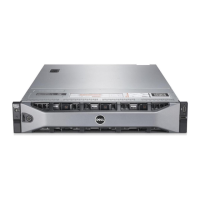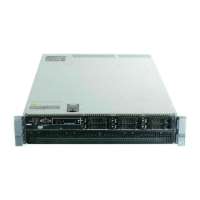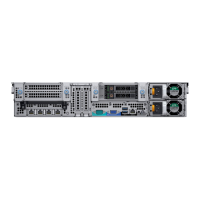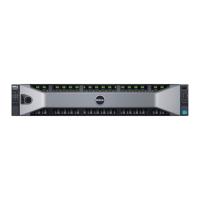● Populate all the sockets with white release tabs first, followed by the sockets with black release tabs.
● Unbalanced or odd memory configurations result in a performance loss, and the system may not identify the memory
modules being installed. Always populate memory channels identically with equal DIMMs for best performance.
● Supported RDIMM configurations are 1, 2, 4, 6, 8, 12, or 16 DIMMs per processor.
Removing a memory module
Prerequisites
1. Follow the safety guidelines listed in the Safety instructions.
2. Follow the procedure listed in Before working inside your system.
3. Remove the air shroud.
4. Remove PEM (if installed) in order to access the system board memory modules.
NOTE: The memory removal procedure on the PEM is same as the system board memory.
WARNING: The memory modules are hot to touch for some time after the system has been powered off. Allow
the memory modules to cool before handling them.
NOTE: To ensure proper system cooling, memory module blanks must be installed in any memory socket that is not
populated. The memory module blanks compatible with the R860 are DDR5 gray color blanks. Remove the memory module
blanks only if you intend to install memory module in these sockets.
Steps
1. Locate the appropriate memory module socket.
2. To release the memory module from the socket, simultaneously press the ejectors on both ends of the memory module
socket to fully open.
CAUTION:
Handle each memory module only by the card edges, ensuring not to touch the middle of the
memory module or metallic contacts.
3. Lift the memory module away from the system.
Figure 80. Removing a memory module
Next steps
Replace the memory module.
120
Installing and removing system components

